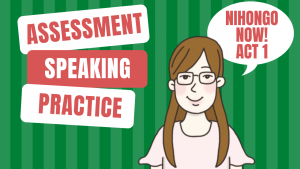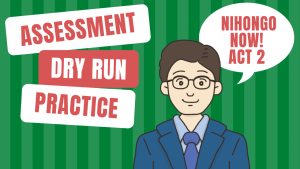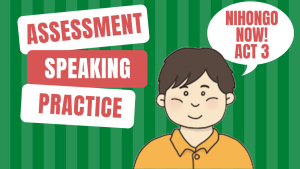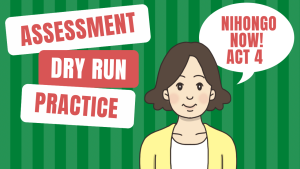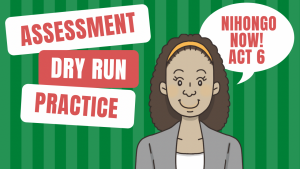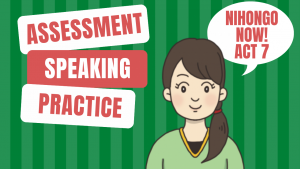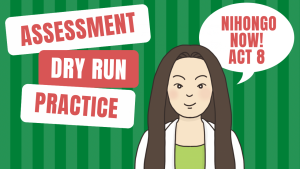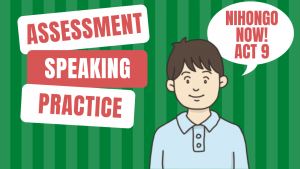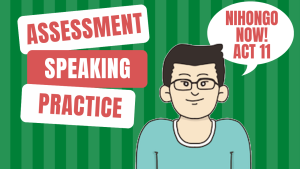Dry Run
Instruction
Part A: Listen to the audio and respond based on the context. Then compare what you said to the sample response.
Part B: Now it’s your turn to start the conversation based on the given context. Listen to how the other person reacts to you. For some items, you may not get a verbal response. If you hear something unfamiliar, rely on what you know to choose the correct answer.
Volume 1
| ACT 1
ACT 2 ACT 3 ACT 4 ACT 5 ACT 6 |
|
Volume 2
| ACT 7
ACT 8 ACT 9 ACT 10
ACT 11 ACT 12 |
Volume 3
Volume 4
Frequently Asked Questions
Where is Dry Run?
The context and Dry Run items are found in the Hyooka (Assessment) section found at the end of each ACT in the Activity Book.
How do we use Dry Run to practice Japanese?
You will need the context and prompts for this activity. For Part A, pause the audio after each question and answer them verbally. Hit play again to listen to and compare your response with the model response. For Part B, read the context and start the conversation based on the give context. Hit play again to listen to and compare your performance with the model and how the other person reacts. You may also use the dry run exercises as a listening practice in the background.
Where can I find the answers?
Model answers are embedded in the audio files. Note that there are other appropriate expressions that can be used to express the same intent. If you come up with expressions that are different from the model answers in the audio files, take notes and ask your teacher about them.
What’s the difference between the YouTube video files and audio files?
The content is the same. The YouTube videos are created upon requests by learners who wanted to slow down the speed or make use of the subtitles.
What can I do if I find the audio too fast for me to understand it?
Before you start listening to each item, be sure to check the context and what kind of questions you are going to answer. Guess what kind of vocabulary and grammar patterns you might hear beforehand. As you listen, be on the look out for new vocabulary and grammar patterns introduced in each ACT. The dialogues make use of many of the vocabulary introduced in each ACT, which includes the additional vocabulary marked with a “+” sign. You may also find it useful to make use of the play speed as well as the subtitles functions available in the YouTube videos.
Why are unfamiliar expressions used sometimes?
Unfamiliar expressions are included purposefully (and sparingly) to help you prepare for real life situations in which you may have to constantly deal with encountering unfamiliar expressions. You should still be able to understand what’s going on based on contextual cues and other expressions that have been introduced in the textbook.
![]()


